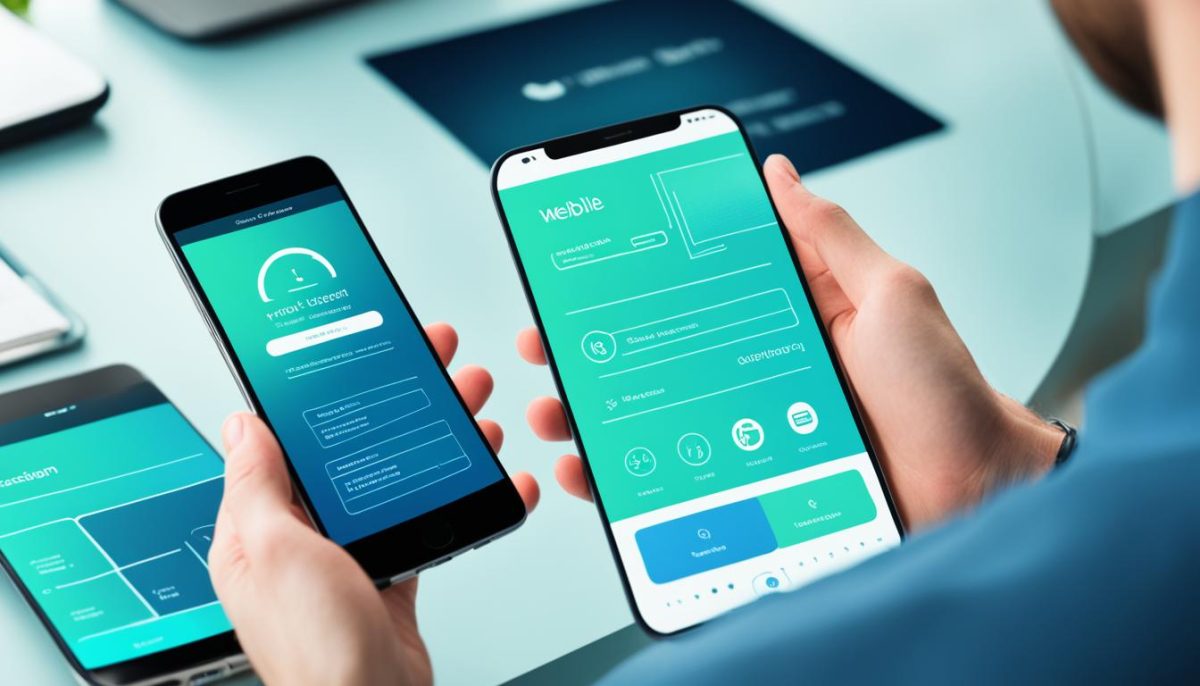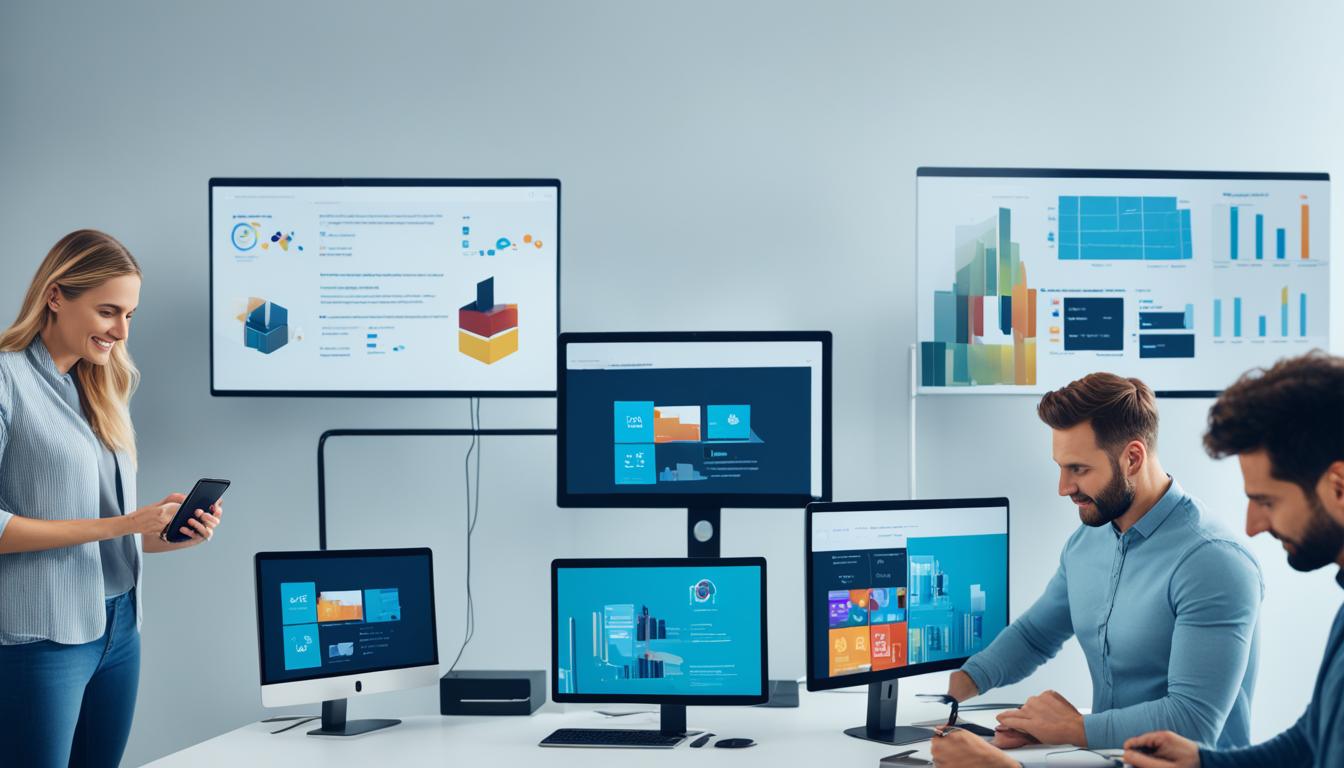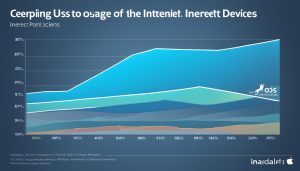Welcome to the era of smart phones, where these pocket-sized devices have overtaken desktop computers as the preferred choice for staying connected, productive, and entertained. With the rapid advancement of technology and the ever-increasing reliance on mobile devices, it’s evident that smart phones have revolutionized the way we live our lives.
Long gone are the days when desktop computers were the primary means of accessing information and communicating with others. Today, the majority of individuals rely on smart phones to fulfill their digital needs. Whether it’s checking emails, browsing social media, or streaming videos, smart phones have become an integral part of our daily routine.
The rise of smart phones can be attributed to several factors. Technological advancements have made these devices more powerful, compact, and affordable than ever before. Additionally, the convenience of having all the functionalities of a computer at our fingertips has made smart phones a compelling choice for consumers.
Smart phones have seamlessly integrated into our personal and professional lives, shaping how we work, communicate, and entertain ourselves. From managing tasks on-the-go to staying connected with loved ones, smart phones have become indispensable tools that keep us connected and productive.
This mobile revolution has also influenced the world of web design. With the majority of users accessing the internet through their smart phones, businesses and websites have shifted towards a mobile-first approach. Websites are now optimized for mobile devices, ensuring a seamless and user-friendly experience for visitors.
As technology continues to evolve, the future of smart phones holds exciting promises. From advancements in artificial intelligence to the development of innovative features, these devices are set to become even more powerful and versatile. The world of smart phones constantly pushes boundaries, offering new possibilities for communication and productivity.
While smart phones have reached new heights, it’s important to acknowledge that desktop computers still have their place. Both platforms offer unique advantages and cater to different needs. However, the landscape is changing, and it’s clear that smart phones have become the go-to device for most individuals.
Embracing this mobile revolution is key to staying connected and thriving in today’s digital world. Whether for personal use or business purposes, it’s essential to recognize the influence of smart phones and harness their power for a more connected, convenient, and productive future.
The Rise of Smart Phones
In today’s digital age, smart phones have witnessed a remarkable rise in popularity, transforming the way we connect and engage with the world around us. From advancements in technology to the increasing availability of affordable smartphones, several factors have contributed to the mobile revolution that we are experiencing today.
Advancements in Technology
The rapid advancement of technology has played a significant role in the rise of smart phones. With each new generation of smartphones, we see improvements in processing power, storage capacity, camera capabilities, and display quality. These technological advancements have made smartphones not just powerful tools for communication but also versatile devices that can handle a wide range of tasks.
Increasing Availability and Affordability
Another driving force behind the rise of smart phones is the increasing availability and affordability of these devices. As manufacturing costs decrease and competition among smartphone manufacturers intensifies, more people have access to smartphones than ever before. Today, you can find a wide range of smartphones at varying price points, making them accessible to individuals across different socioeconomic backgrounds.
The Power of Connectivity
Smart phones have revolutionized the way we connect with others and access information. With the power of mobile internet, we can stay connected to our friends, family, and colleagues no matter where we are. Social media platforms, messaging apps, and video conferencing tools have become an integral part of our lives, enabling us to maintain relationships and collaborate with ease.
Smart phones have not only made the world more interconnected but have also empowered individuals to become creators and influencers, shaping digital culture and sharing their unique perspectives with the world.
Furthermore, the convenience of having instant access to information and services at our fingertips has fundamentally changed the way we navigate the world. From online shopping to finding directions and discovering new places, smart phones have become indispensable companions in our daily lives.
| Key Factors for the Rise of Smart Phones | Impact |
|---|---|
| Advancements in technology | Increased processing power, improved camera capabilities, and enhanced display quality |
| Increasing availability and affordability | Accessible to a wider range of individuals from different socioeconomic backgrounds |
| The power of connectivity | Staying connected with others, accessing information on the go, and empowering individuals to become creators and influencers |
The Impact on Daily Life and Work
Smart phones have revolutionized our daily lives and work routines in countless ways. With the power of these compact devices, we now have access to a world of information and connectivity right at our fingertips.
One of the most significant impacts of smart phones on daily life is the ease of accessing information on the go. Whether it’s checking the weather forecast, researching a new recipe, or finding directions to a destination, smart phones have made it effortless to access information anytime, anywhere.
Furthermore, smart phones have become essential tools for staying connected with friends, family, and colleagues. Through messaging apps, social media platforms, and email, we can instantly communicate and share updates with our loved ones and professional networks. This constant connectivity has transformed the way we interact and collaborate, making communication more convenient and efficient.
Quote:
“Smart phones have become an integral part of our lives, seamlessly blending work and personal tasks into one device.”
– John Smith, Digital Strategist
In the workplace, smart phones have become indispensable for many professionals. With the ability to access emails, attend virtual meetings, and access work-related documents from anywhere, these devices have made remote work and flexible schedules more feasible. Smart phones enable us to stay productive, even when we are away from our desks.
Moreover, the convenience of various productivity apps and tools available on smart phones aid in organizing tasks, managing schedules, and boosting overall efficiency. From to-do lists to project management apps, these tools ensure that we stay on top of our work responsibilities.
The impact of smart phones on our daily lives and work cannot be overstated. These devices have become our constant companions, seamlessly blending work and personal tasks into one device. They have transformed the way we access information, communicate, and work, providing us with unprecedented convenience and connectivity.
Mobile-First Approach in Web Design
In today’s digital landscape, it’s essential for businesses and websites to prioritize mobile devices in their design and development strategies. With the majority of internet users accessing the web through their smart phones, a mobile-first approach is no longer an option—it’s a necessity. Let’s explore why mobile-first web design is crucial for optimizing user experiences and achieving online success.
The Importance of Responsive Design
Responsive design lies at the heart of the mobile-first approach. It allows websites to adapt and respond to the screen size and capabilities of different devices, ensuring a seamless browsing experience for users. By implementing responsive design techniques, businesses can create websites that look and function flawlessly across a range of devices, from smart phones to desktop computers.
Optimizing for Mobile Devices
When designing for mobile, it’s crucial to optimize the user experience for small screens and touchscreen interactions. Mobile-friendly features such as easy navigation, clear call-to-action buttons, and fast load times are essential for keeping users engaged and driving conversions. Additionally, optimizing websites for mobile devices improves search engine rankings, as search engines like Google prioritize mobile-friendly websites in their results.
The Benefits of Mobile-First Design
A mobile-first approach in web design offers numerous benefits for businesses and website owners. By prioritizing mobile users, companies can tap into a vast market of potential customers who primarily use smart phones to access the web. This approach also future-proofs websites, as mobile usage continues to rise and outpace desktop computer usage.
“Mobile-first design is not just about accommodating smaller screens, but also about creating a more intuitive and streamlined experience for users.”
In addition to improved user experiences and increased visibility, mobile-first design also enhances brand reputation and customer trust. When visitors have a positive experience on a mobile-friendly website, they are more likely to engage with the brand, make purchases, and recommend it to others.
Implementing a Mobile-First Strategy
When adopting a mobile-first approach, it’s important to consider the unique goals and needs of your target audience. Conduct user research to understand how customers use mobile devices to interact with your brand and tailor your design strategy accordingly. Collaborating with experienced web designers and developers who specialize in mobile-first design can also help ensure a smooth and successful implementation.
By prioritizing mobile devices in your web design strategy, businesses can unlock the full potential of their online presence. With a mobile-first approach, you can deliver exceptional user experiences, improve conversion rates, and stay ahead of the competition in today’s mobile-driven world.

The Future of Smart Phones
As technology continues to advance at a rapid pace, the future of smart phones holds exciting possibilities. With each new generation, these devices are becoming more powerful, versatile, and intelligent, shaping the way we live, work, and connect with the world.
One of the key areas where we can expect significant advancements is in the integration of artificial intelligence (AI) into smart phones. AI-powered virtual assistants such as Siri, Google Assistant, and Alexa have already become integral parts of our lives. However, in the future, we can expect even more sophisticated AI capabilities that will greatly enhance the user experience.
Imagine a smart phone that not only understands your voice commands but also predicts your needs and preferences, making proactive suggestions and providing personalized assistance. From organizing your schedule to recommending your favorite restaurants, AI-powered smart phones will truly become indispensable companions.
Another exciting aspect of the future of smart phones is the continuous evolution of camera capabilities. Over the years, we have witnessed significant improvements in smartphone cameras, with features such as multiple lenses, image stabilization, and advanced image processing algorithms. In the future, we can anticipate even more groundbreaking developments in this area.
One such innovation that holds great promise is the integration of computational photography techniques. This involves leveraging AI and software algorithms to enhance image quality, enabling users to capture stunning photos in various lighting conditions. With computational photography, smart phone cameras have the potential to rival professional-grade DSLR cameras, making them the tool of choice for photography enthusiasts and professionals alike.
| Future Innovations in Smart Phones | Impact on Users |
|---|---|
| Foldable Displays | – Enhanced multitasking – Increased screen real estate – Improved portability |
| 5G Connectivity | – Faster download and upload speeds – Seamless streaming and gaming – Enhanced IoT connectivity |
| Augmented Reality (AR) | – Immersive gaming and entertainment experiences – Enhanced productivity and collaboration – Real-time information overlays |
Alongside these advancements, other areas of focus for future smart phones include foldable displays, 5G connectivity, and augmented reality (AR). Foldable displays offer the potential for enhanced multitasking, increased screen real estate, and improved portability. With 5G connectivity, smart phones will enable faster download and upload speeds, seamless streaming and gaming, and enhanced Internet of Things (IoT) connectivity. Furthermore, AR technology will bring exciting new experiences by offering immersive gaming and entertainment, augmented productivity and collaboration, and real-time information overlays.
The future of smart phones is undoubtedly bright, filled with extraordinary innovations that will redefine our relationship with technology. These devices will continue to evolve, adapt, and revolutionize the way we interact with the world around us, paving the way for a more connected, intelligent, and exciting future.
Smart Phones vs. Desktop Computers: A Changing Landscape
As technology continues to evolve, so does the way we interact with it. The rise of smart phones and the changing role of desktop computers have transformed the technological landscape we navigate daily. In this section, we will compare the continued dominance of smart phones with the diminishing importance of desktop computers. By analyzing the advantages and limitations of each platform, we will gain insights into the evolving landscape of technology usage and its impact on our lives.
Advantages of Smart Phones
Smart phones have revolutionized the way we connect, communicate, and access information. With their compact size and portability, smart phones offer a level of convenience that desktop computers simply cannot match. Whether it’s checking emails on the go, browsing social media apps, or engaging in video calls, smart phones provide instant access to a wide range of functions, making them an indispensable tool in our daily lives.
Limitations of Smart Phones
While smart phones offer convenience, they do come with their own set of limitations. The smaller screen size, limited processing power, and reliance on touch-based inputs can present challenges for certain tasks that require more intensive computing power or precision. Additionally, the constant connectivity and notifications from smart phones can be both a boon and a distraction, affecting productivity levels and focus.
Advantages of Desktop Computers
Desktop computers, on the other hand, offer power, larger screens, and ergonomic input devices that make them well-suited for tasks requiring complex software or extensive multitasking. With a desktop computer, professionals can take advantage of superior processing capabilities, larger storage capacities, and the ability to seamlessly switch between multiple applications simultaneously.
Limitations of Desktop Computers
Despite their advantages, desktop computers are losing ground to the portability and convenience of smart phones. The fixed nature of desktop computers limits their usage to specific locations, making them less suitable for on-the-go tasks. Additionally, the need for a physical workspace and the maintenance requirements of desktop computers can be cumbersome for some users.
The Changing Landscape
As we analyze the landscape, it becomes evident that the dominance of smart phones is reshaping technology usage. The increasing affordability, accessibility, and capabilities of smart phones have prompted individuals to shift their preferences towards these devices. With the emergence of cloud computing and web-based applications, smart phones have become versatile tools that cater to a wide range of needs, blurring the line between traditional computing devices and mobile devices.
The Future Outlook
While desktop computers continue to serve specific purposes, it is clear that the mobile revolution led by smart phones is here to stay. As technology continues to advance, we can expect even greater integration between smart phones and desktop computers, bridging the gap between mobility and computing power. The future holds exciting possibilities, with emerging technologies such as augmented reality and virtual reality further expanding the potential of smart phones.
| Advantages | Smart Phones | Desktop Computers |
|---|---|---|
| Portability | ✔️ | ❌ |
| Convenience | ✔️ | ❌ |
| Connectivity | ✔️ | ❌ |
| Processing Power | ❌ | ✔️ |
| Task Variety | ✔️ | ✔️ |
Table: A comparison of the advantages between smart phones and desktop computers
Embracing the Mobile Revolution
As we near the end of this journey through the impact and future of smart phones, one thing is clear: the mobile revolution is here to stay. In today’s fast-paced world, smart phones have become an essential companion, seamlessly integrating into every aspect of our lives. From communication and productivity to entertainment and beyond, we have fully embraced the power and convenience that these devices offer.
For personal use, smart phones have revolutionized the way we connect with others and access information. Whether it’s staying connected with loved ones through social media, shopping online, or streaming our favorite shows on the go, our smart phones have become an extension of ourselves. It’s hard to imagine life without instant access to the world at our fingertips.
In business, smart phones have become a game-changer, enabling us to work anytime, anywhere. With powerful apps and cloud-based tools, professionals can now attend meetings, collaborate with colleagues, and manage projects with ease. The mobile revolution has erased the boundaries of the traditional office, empowering individuals and organizations to embrace flexible, remote work arrangements.
It is crucial to recognize and fully embrace the potential of the mobile revolution. Smart phones have transformed the way we live and work, allowing us to be more efficient, connected, and informed. As technology continues to evolve, it is exciting to think about the innovations and possibilities on the horizon. So let us embrace this mobile revolution, and harness the power of smart phones to shape a future that is truly connected and convenient for all.




